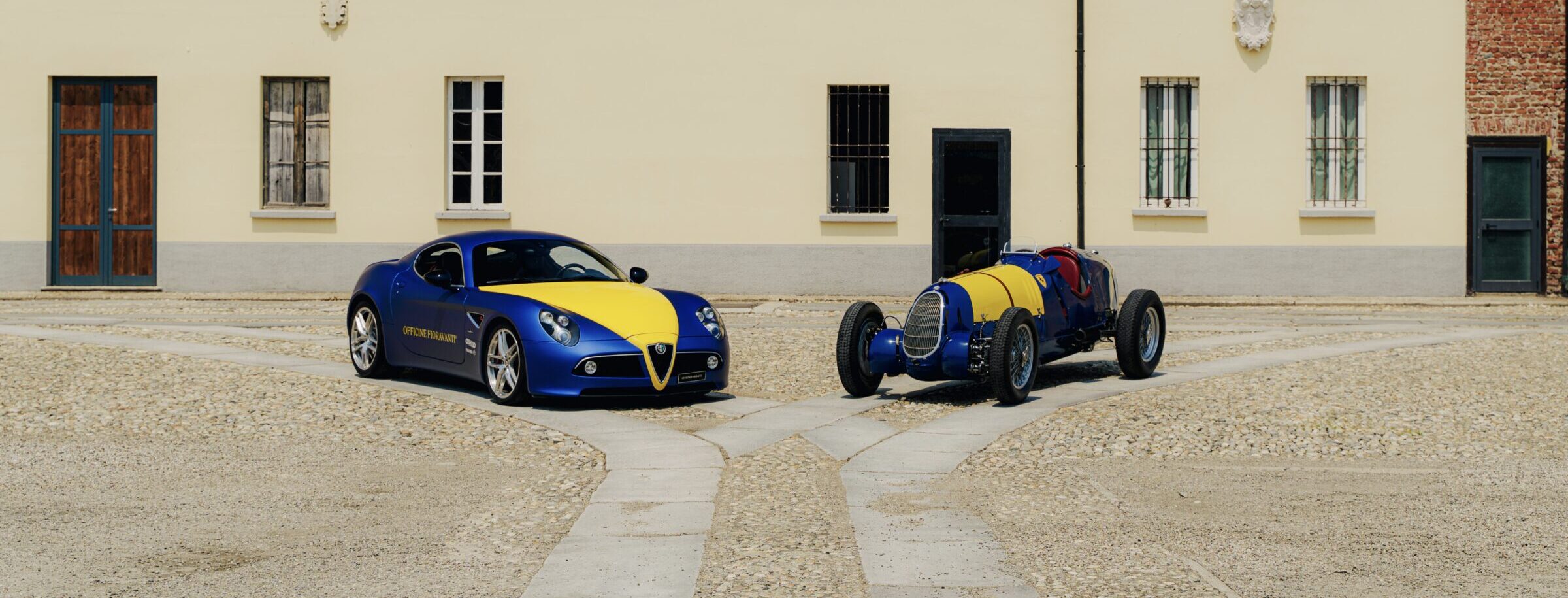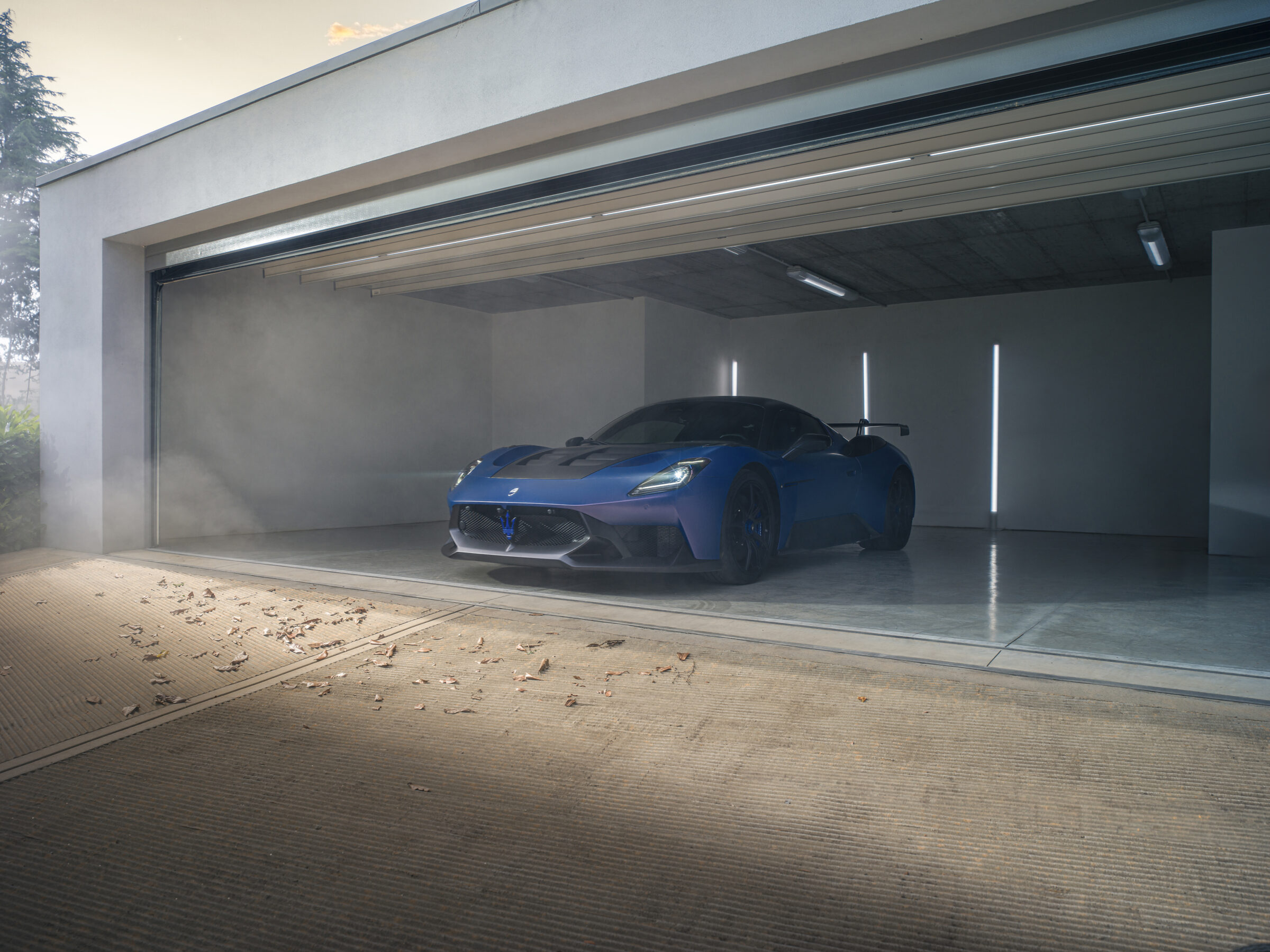Ferrari 296 GTB
As a new compact mid-engine model, Ferrari presents the 296 GTB online today. If you exclude the classic Dino, which was always considered a sub-brand in its own right, this is the first V6 road sports car in the brand’s history. For the model name, Ferrari pulls together the first two numbers of the displacement and the number of cylinders and adds the abbreviation GTB to this number. The displacement is 2,996 cc. Even though at first glance these data seem like a downgrade from the F8 Tributo, the hybrid powertrain shouldn’t be forgotten here. There are similarities with the legendary Dino, however Ferrari doesn’t see the 296 GTB as an indirect successor, as it is positioned differently in the model range. It is a third mid-engine model, not a replacement for already known model series.
Powerful hybrid drive
An important point in the vehicle development was the highest possible driving pleasure. A short wheelbase was chosen, powered by a V6 biturbo engine and an electric motor. In combination, the hybrid drive produces 610 kW/830 hp and 740 Nm of torque. Classification as an entry-level model is therefore only possible via the compact dimensions. In the V6 with 120° bank angle, Ferrari mounts the two IHI turbochargers in the hot inner-V to lower the center of gravity. Compared to the rest of the model range, the combustion engine is 50 millimeters lower in the vehicle. Between the engine and transmission sits a 122 kW/167 hp axial-flow electric motor, the MGU-K unit. With this drive alone, the 296 GTB can be driven up to 15.5 miles and up to a speed of 83.8 mph purely electrically. With combined power, the sports car accelerates to 62 mph in 2.9 seconds and to 124 in 7.3 seconds, half a second faster than the F8 Tributo. A maximum of over 205 mph is possible.
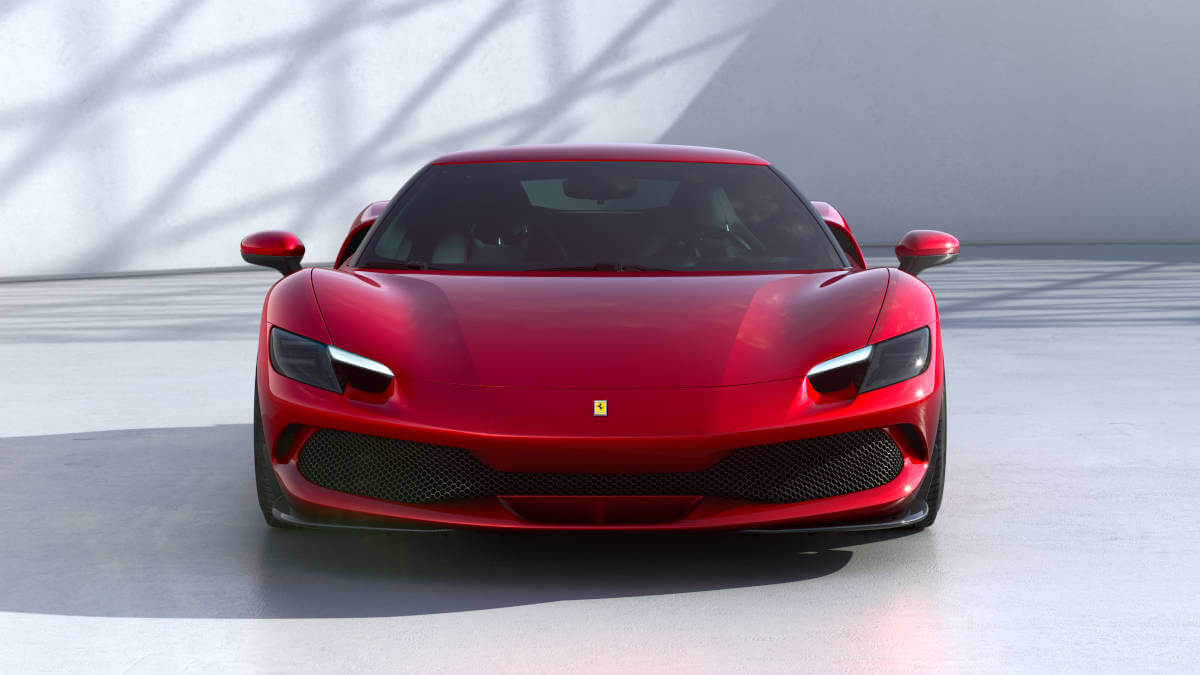

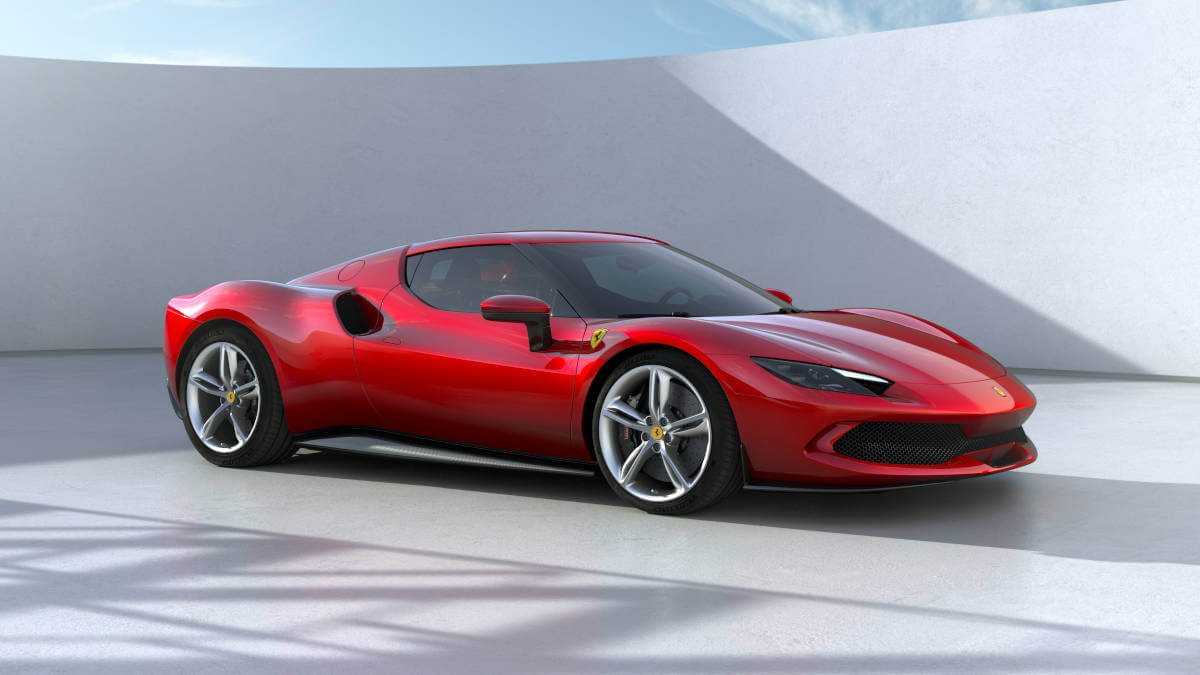

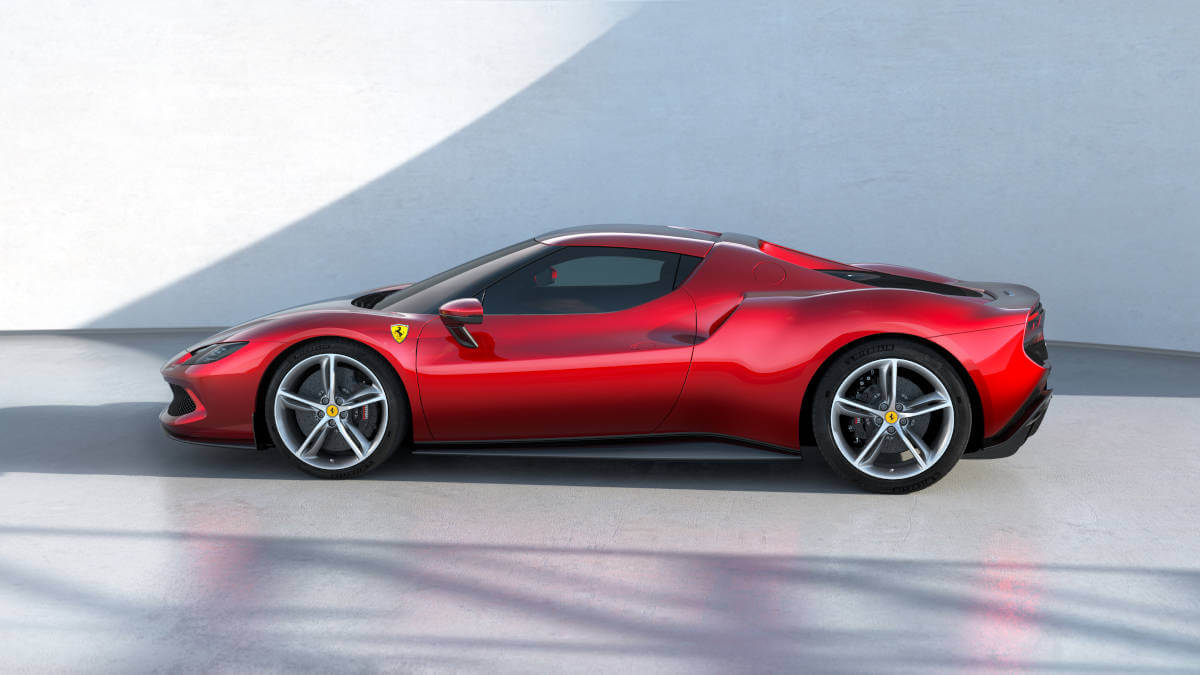

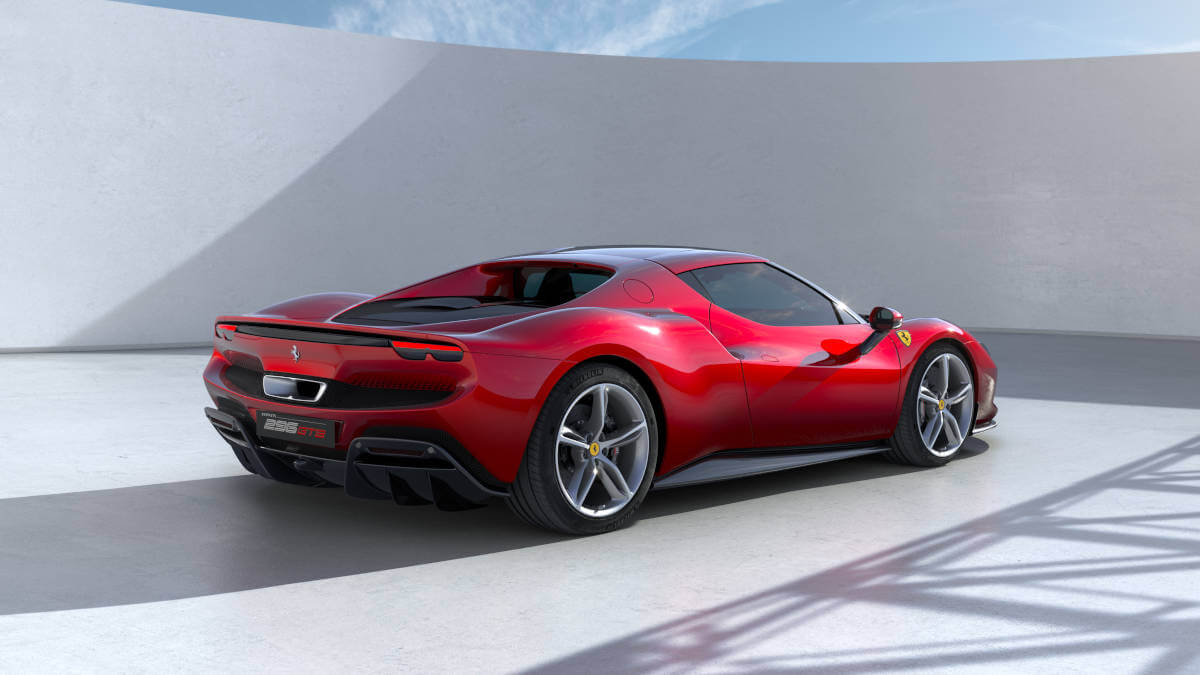

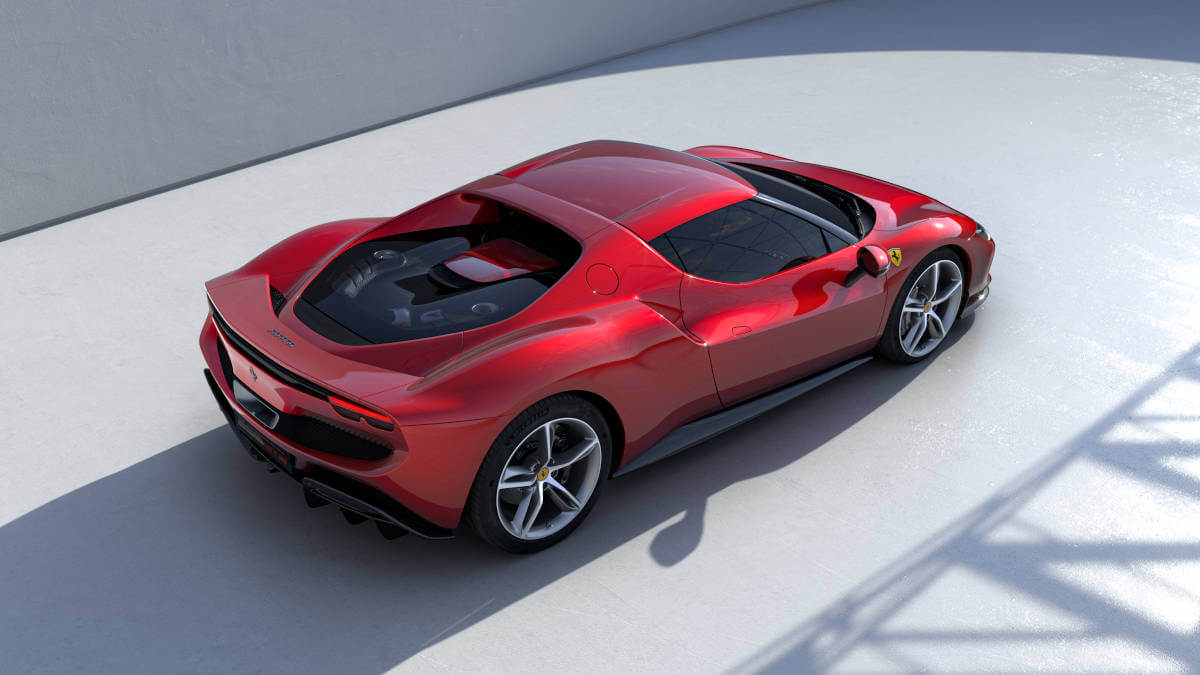

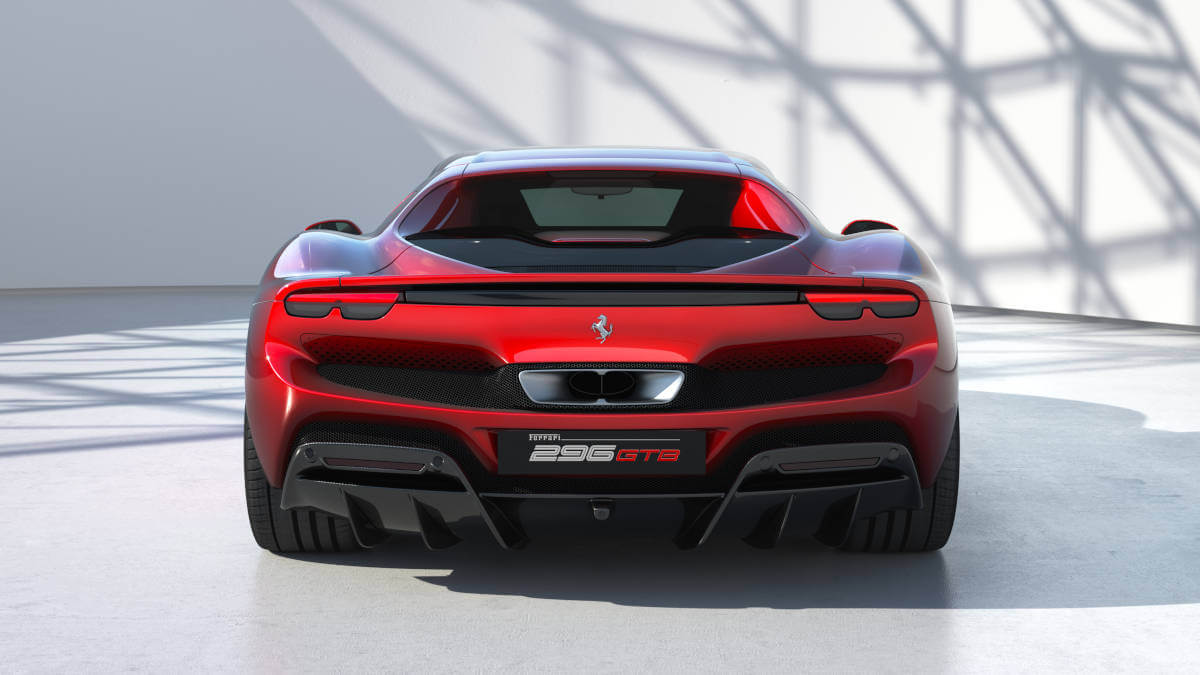

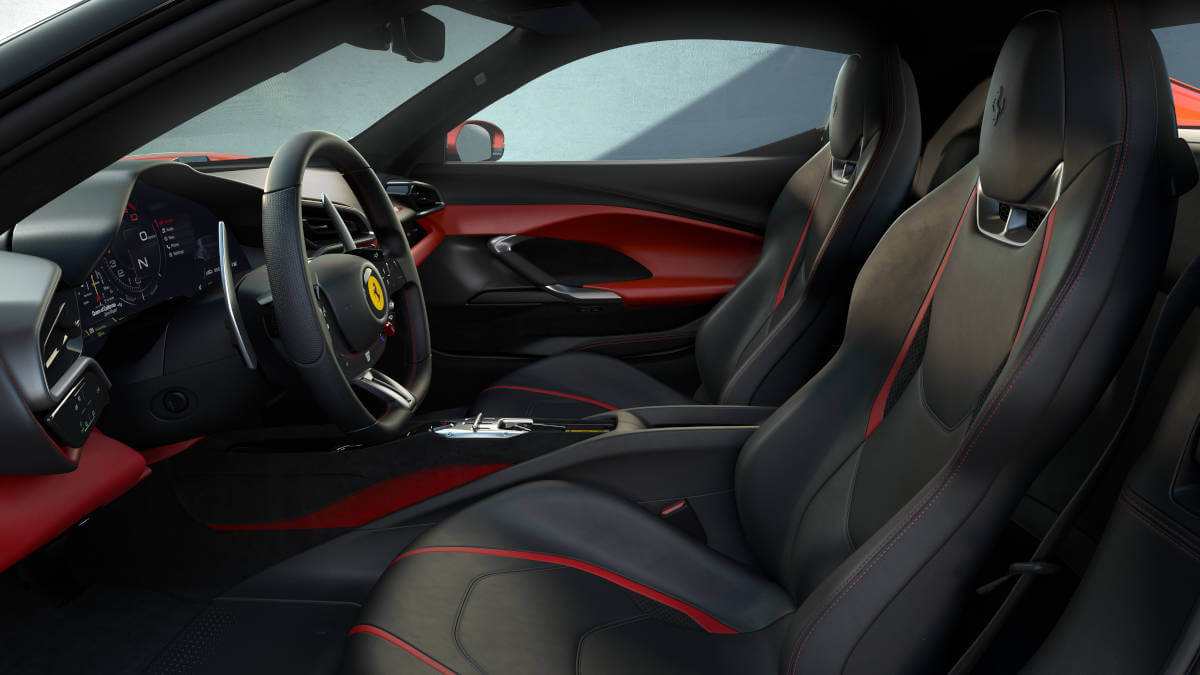

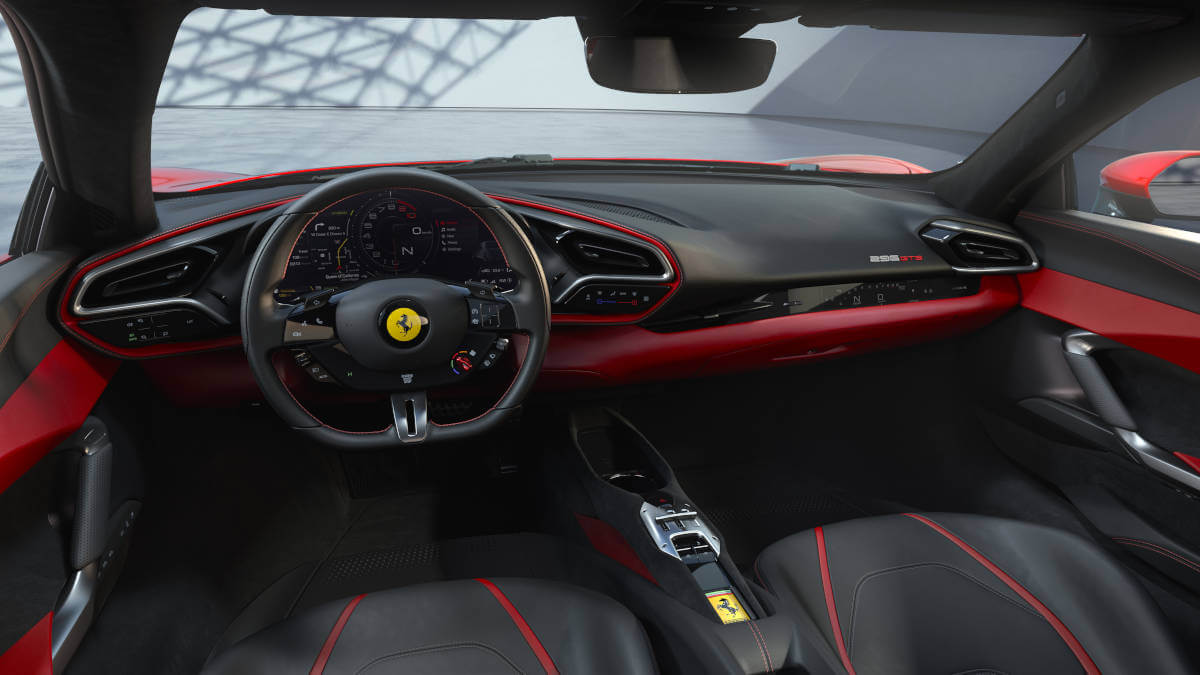

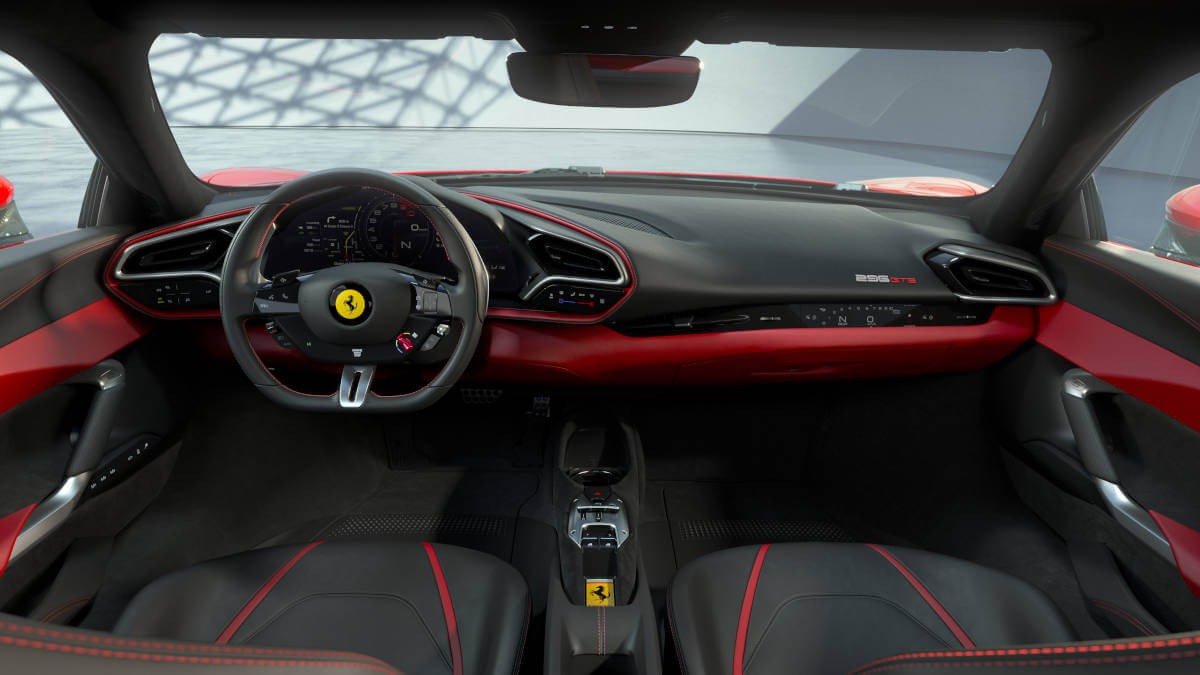

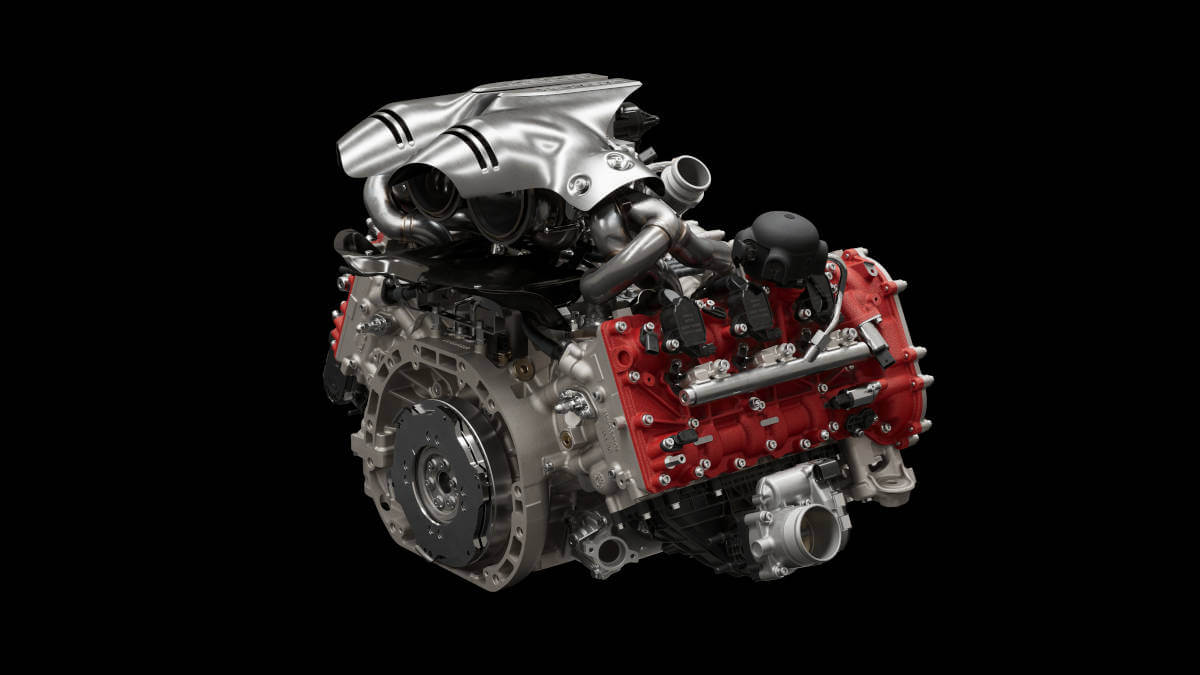

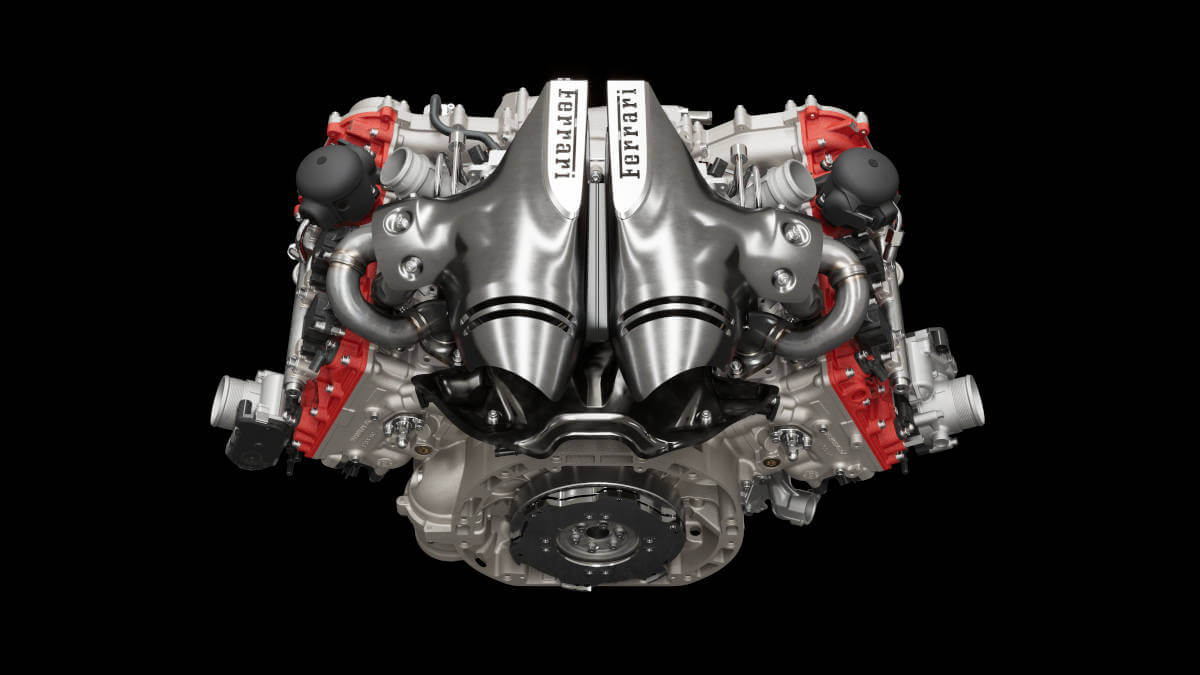

Unladen weight on a par with the 488 GTB
The newly developed V6 biturbo engine weighs just 185 kilograms without fluids. Added to this are 22 kilograms for the electric motor and 77 kilograms for the 7.45 kWh batteries housed in the vehicle floor. This gives the 296 GTB a kerb weight in the range of the 488 GTB – with significantly higher performance. According to the data sheet, it’s around 1,470 kilograms. The eight-speed dual-clutch transmission is taken from the larger SF90 Stradale, but with modified ratios and a reverse gear. In the SF90, this is handled by the electric motor on the front axle. Through targeted sound design, Ferrari achieved a musical soundtrack despite turbocharging and two fewer cylinders than in the F8 Tributo. The exhaust manifold and catalytic converter housing are made of Inconel, a steel-nickel alloy used in racing.
Sophisticated aerodynamics
By arranging the turbochargers in the hot inner-V, Ferrari centers hot engine exhaust air specifically at one point. The engine hood behind the vertical rear window takes this into account by integrating a large air outlet centrally. To the left and right of the hood, bulges from the roof to the rear extend the roofline. Similar features have already been seen on classic models such as the Testarossa, the 348 or the 355. A wing is integrated at the rear end of the roof to direct the airstream specifically to the rear end. There, as on the LaFerrari, a spoiler lip extends as needed to generate more downforce. Brand fans are already familiar with the line of the side windows from the J50 or P80/C. Behind the doors, large air intakes provide enough fresh air in the engine compartment. The front and rear clearly borrow from the typical Ferrari design, but also reinterpret it. To allow as much space as possible for the rear diffuser, the exhaust exits centrally above the license plate.
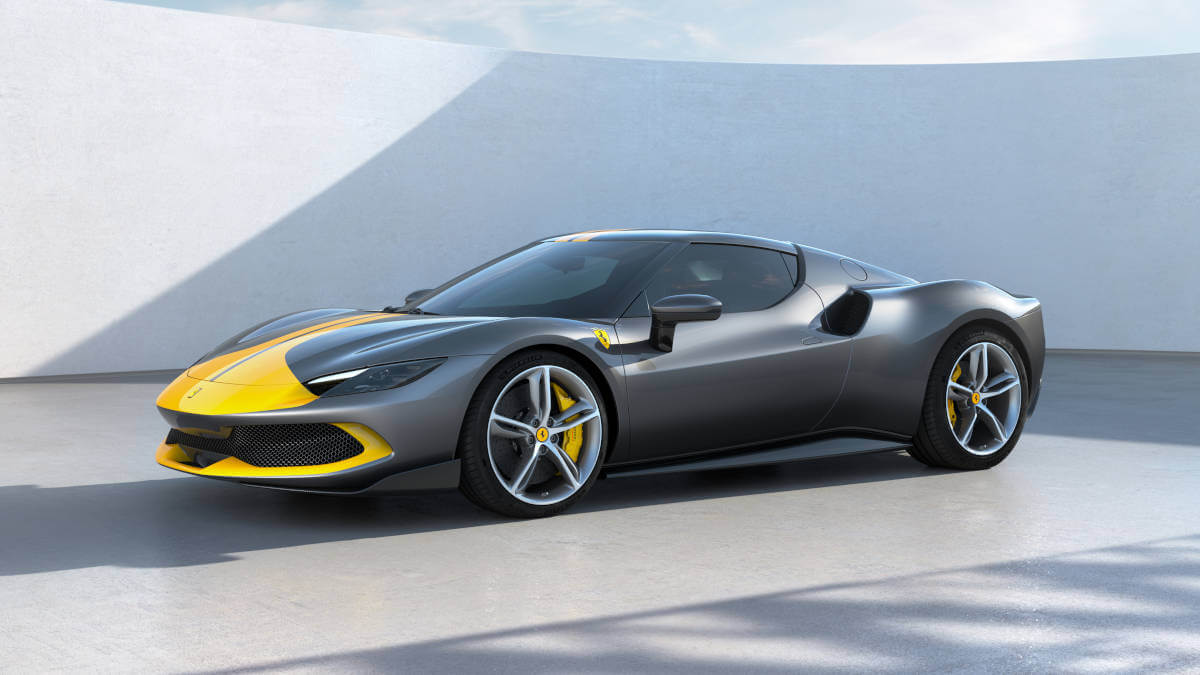

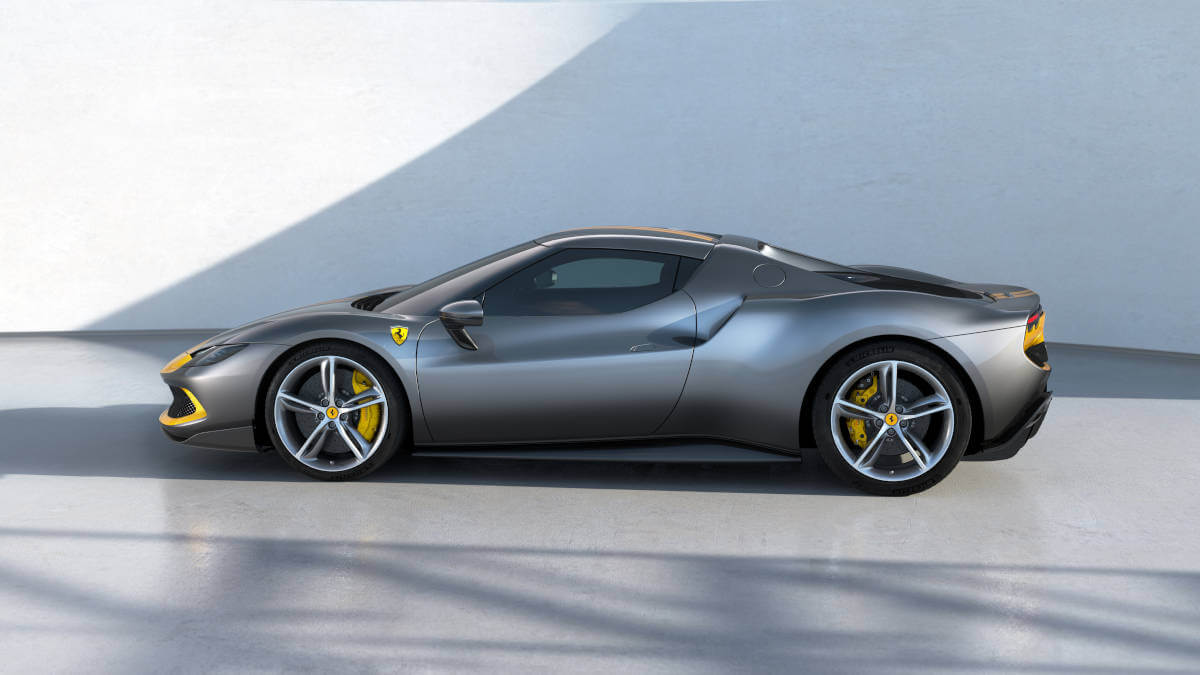

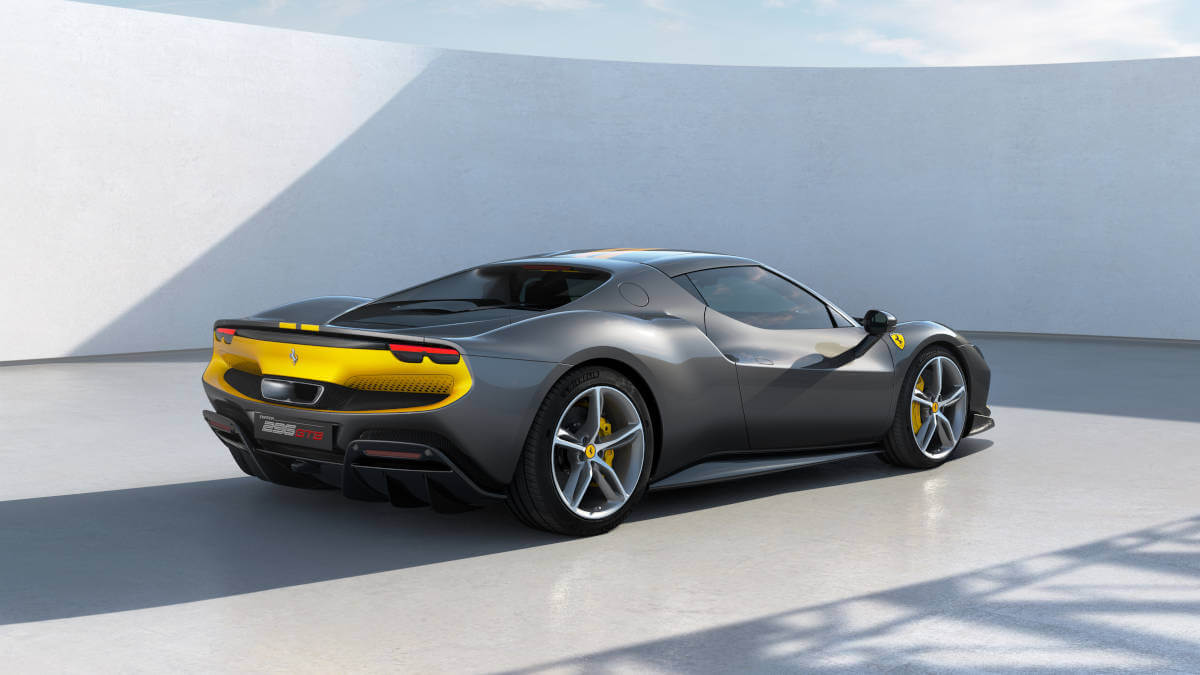

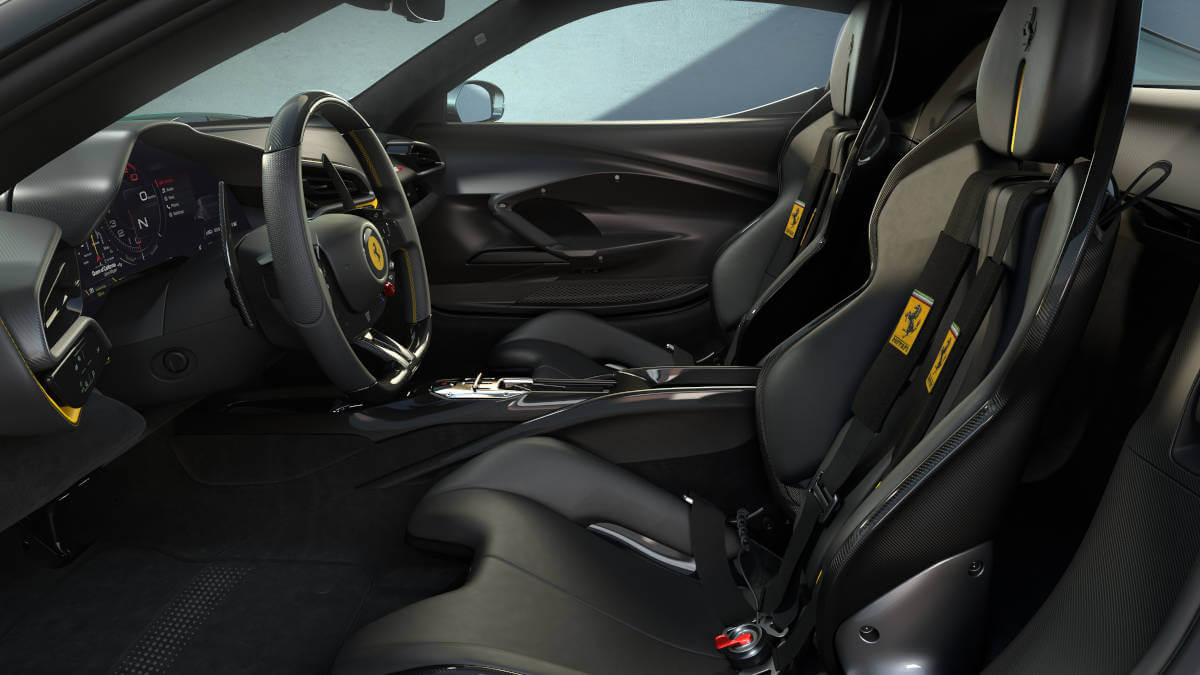

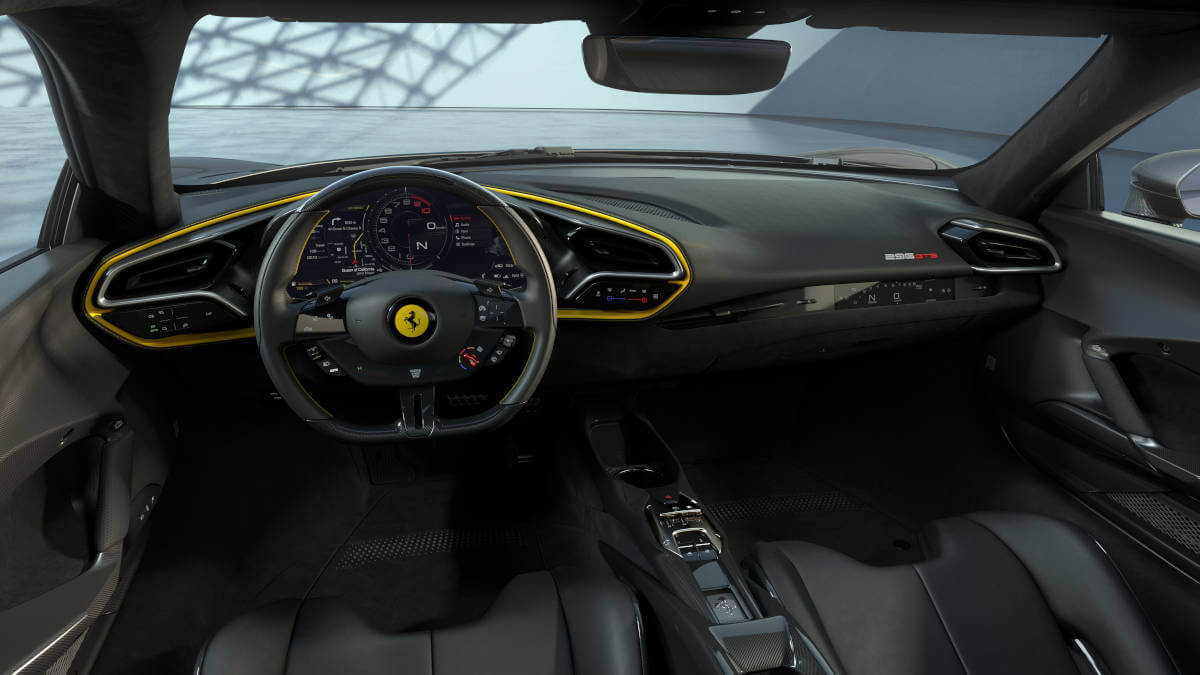

Driver-oriented cockpit
As a pure two-seater, Ferrari gears the 296 GTB primarily to the driver’s enjoyment. Visually, the cockpit of the SF90 is used. A minimalist design with good aesthetics was created around a digital user interface. Behind the three-spoke multifunction steering wheel, the instrument cluster sits in a deep recess. On either side of it, touch control satellites sit below air vents. There’s also a sculpturally light door trim and the implied H-shift pattern on the center tunnel. Ferrari developed new diapason-design seats specifically for the 296 GTB. The head-up display and audio system speakers are barely visible. Instead of metal covers, a thermoplastic material in dashboard color is used for the speakers.
Assetto Fiorano package at extra cost
As with the SF90 Stradale and SF90 Spider, interested customers can order the Assetto Fiorano package on request. This allows the full power and dynamics of the 296 GTB to be exploited. A new carbon front spoiler lip gives the car 10 kilograms more downforce. Michelin Sport Cup2R high-performance tires are also part of the package. At the same time, a Lexan rear window and various carbon add-on parts inside and out lighten the car by 12 kilograms. Inspired by the 250 LM from the 1960s, a special paint finish with a stripe design from front to rear can be ordered. The base price for the 296 GTB in Italy is € 269,000. With Assetto Fiorano package, it’s at least € 302,000.
Images: Ferrari


